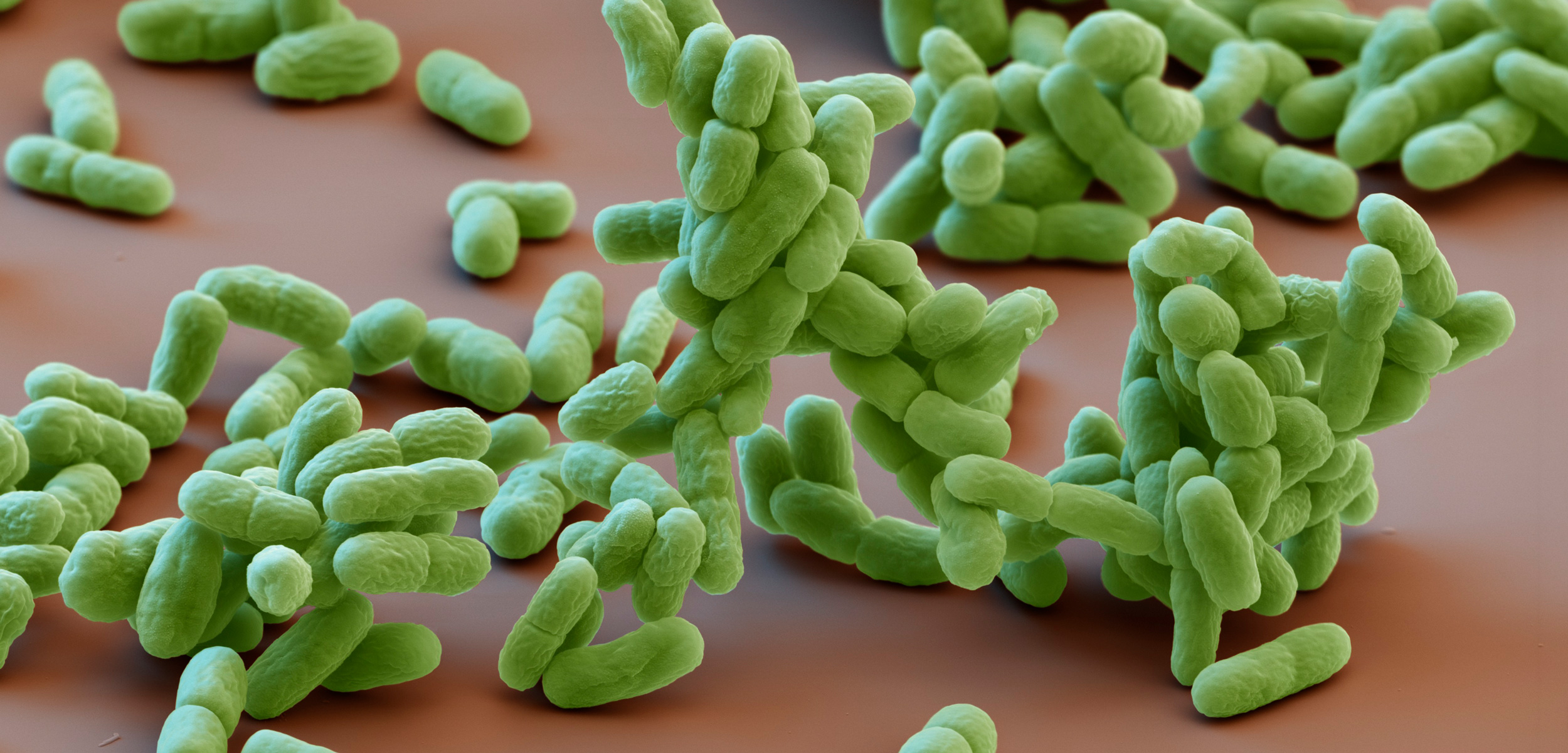Scientists Want to Make Fuel and Plastic Out of Bacteria
Tiny but mighty, octillions of cyanobacteria in the ocean create diesel-like hydrocarbons in huge amounts. A team of researchers wants to know why.
Article body copy
As they reproduce or perish, photosynthesizing bacteria, known as cyanobacteria, collectively release hundreds of millions of tonnes of liquid hydrocarbons into the ocean every year. Fortunately, for the wider ecosystem, other single-celled organisms are quick to gobble up most of these compounds before they reach the surface.
These hydrocarbons, called alkanes, are chemically similar to diesel. If the other bacteria didn’t consume the compounds, the cyanobacteria would effectively create oil spills. Precisely what these alkanes are doing in the bodies of cyanobacteria—and why every known species of cyanobacteria produces them—is a mystery. And it is one that an international, multidisciplinary group of researchers is dedicated to unraveling.
The scientists say this deep dive into the world of microscopic hydrocarbon manufacturing could lead to the production of bacteria-borne biodegradable plastics and biofuels, which would be easier on the environment than the extraction of fossil fuels.
David Lea-Smith, a microbiologist at the University of East Anglia in England, is leading the team. The project is building in part on his studies revealing the sheer scale of hydrocarbon production and consumption by marine microbes.
According to that work, hydrocarbon-producing cyanobacteria are among the most abundant photosynthetic creatures on the planet. At any given moment, the ocean can hold as many as three octillion Prochlorococcus and 700 septillion Synechococcus, Lea-Smith says. These two genera of cyanobacteria alone produce between 300 and 800 million tonnes of alkanes per year. “They must be making them for an important reason,” he says.
The scientists are still working out what this reason is, but their leading hypothesis—based in part on the work of team member and University of Auckland biologist Jane Allison—is that alkanes prevent the cyanobacteria’s cell walls from becoming large and rigid, which makes it difficult for the cells to split when the time comes to reproduce.
Allison came to this conclusion based on experiments using a molecular modeling program called Gromacs, which lets her test how hydrocarbons and other molecules in the cyanobacteria’s cell walls interact on a chemical level. In real life, the reactions take place over a few hundred nanoseconds and at a scale of a few hundred nanometers. But the program makes an accurate simulation of the whole affair visible to the human eye.
“These are things you could never observe, even with an amazing microscope. It’s just too small,” Allison says.
So far, the modeling supports the team’s hypothesis—it appears the cells have difficulty splitting without the alkanes.
Pauli Kallio, a molecular plant biologist at the University of Turku in Finland, has no doubts that alkanes add flexibility to cell membranes. But he is unconvinced that this is their main function. He believes the added flexibility is more likely a side effect than the hydrocarbons’ raison d’être.
Given that cyanobacteria photosynthesize—and the complexity of the process in single-celled organisms—Kallio believes the hydrocarbons instead play a role in the cyanobacteria’s ability to make food for themselves. Perhaps the alkanes are necessary for maintaining the parts of the cell responsible for photosynthesis, he says. Though Kallio’s lab has been studying bacteria of all stripes for years, there are still many unknowns, he says.
Besides exploring the basic chemical processes inside the cell, Allison is also using computer simulations to test how cyanobacteria might be affected by climate change. Using Gromacs, she can adjust environmental factors such as temperature, acidity, and pressure, and observe how the organisms respond.
The model shows that just a few degrees Celsius of warming can change the cyanobacteria’s cell membranes—normally viscous and gelatinous—into an almost liquid state. It’s still unknown what effect this could have on their survivability. For instance, this reduced stability could make them lose their form and have trouble reproducing. Alternatively, the added warmth and flexibility could make it easier for them to reproduce.
With any luck, however, research into the cyanobacteria’s propensity for producing hydrocarbons could render this question of their ability to adapt to a warming world somewhat moot. Along with studying the microbes’ basic biology, the scientists are looking to put them to work.
Viji Sitther, a biologist at Morgan State University in Baltimore who is not affiliated with Lea-Smith’s team, has genetically altered cyanobacteria (specifically Fremyella diplosiphon) in hopes of more efficiently harvesting hydrocarbons.
Shifting to this potentially green alternative is an important step in reducing the environmental effects of fossil fuels, Sitther says, but the process of harvesting hydrocarbons from cyanobacteria requires a large amount of energy. In addition, contamination with other algae and bacteria reduced productivity. Learning more about the chemistry in the cell’s membrane could lead to cleaner and more energy-efficient ways to extract the useful alkanes, she adds.
While the diesel-like alkanes are only produced by cyanobacteria, Lea-Smith’s team believes other microbes, including some yeast species, are producing a huge range of other hydrocarbons. Going forward, he and his colleagues will be searching for the presence and purpose of these compounds in many single-celled organisms.
It’s still early days for the project, but it’s likely the work will have applications—both scientific and industrial—that the team hasn’t thought of yet. As the results start trickling in, Lea-Smith’s team will pass on their knowledge to those working in fields that could benefit from their insights into this microscopic world.

